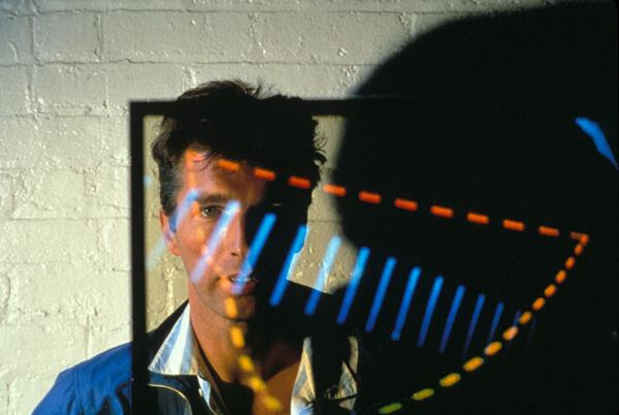Rudie Berkhout “Transmission Holograms 1978 - 1988”
Higher Pictures

This event has ended.
Higher Pictures presents Transmission Holograms 1978 - 1988 by Rudie Berkhout. This is the artist’s first solo exhibition with the gallery.
Berkhout (1946-2008) moved from Amsterdam to New York City in 1974 and was introduced to holography at the historic survey exhibition Holography ‘75: The First Decade at the International Center of Photography in 1975. Inspired, Berkhout dedicated himself to the study and making of holograms soon becoming one of the medium’s leading figures.
The hologram’s relatively short history is intertwined with key developments in technology and photography in the 20th century. In the late 1890s, the physicist Gabriel Lippmann developed a precursor to holography—a way to add color to photographs without any pigments or dyes using only the natural behavior of light waves reflected off of chemically treated photographic plates. The Hungarian physicist Dennis Gabor coined the term “holography” (from the Greek words for “whole” and “message”) in 1947, although his invention of the process was not complete until the advent of the laser in the 1960s.
Made during a period of widespread popular interest in holography, Berkhout’s transmission holograms represent the height of his artistic production and recognition. In a transmission hologram, a light is shone through the back of a glass plate treated with silver halide; as it illuminates the silver halide crystals, a three-dimensional image of light appears suspended behind the plate’s surface. The composition is experienced in space as a sculpture, changing as the viewer shifts perspective, moves up and down, or walks around the image. In Berkhout’s work, colored spheres float, materialize, and disappear, all at varying depths in illusory holographic space; bands of color flow in and out of each other infinitely undulating waves of light resemble ripples moving along the surface of water. Berkhout has compared holograms to vinyl sound recordings, in which information is encoded in the physical medium and only experienced when “played back”—in the hologram’s case, by light. For him, holography was the convergence of art, science, and philosophy, expanding the dialogue of image-making while presenting the brain with a visual experience that it knows is physically impossible. Like artists’ use of coding, digital animation software, and robotics today, holography was an early example of technology being rapidly adopted for artistic use.
Rudie Berkhout’s solo exhibitions include The Floating World: Holograms by Rudie Berkhout, at the Samuel Dorsky Museum of Art, New Paltz (2016); Light Years: The Art of Rudie Berkhout, at the IMC Lab + Gallery, New York (2011); and Light Magic: Rudie Berkhout, at the Center for the Holographic Arts, New York (2009). His work has been included in group exhibitions at the ZKM Center for Art and Media, Karlsruhe; MIT Museum, Cambridge, Massachusetts; the Whitney Museum of American Art, New York; and the International Center of Photography, New York. Berkhout’s work is held in numerous public collections, including those of the Art, Science & Technology Institute, Washington, DC; Franklin Institute, Philadelphia; Gekkoso Gallery, Tokyo; MIT Museum, Cambridge; and the National Museum of Science & Technology, Ottawa.
Media
Schedule
from May 19, 2018 to July 03, 2018
Opening Reception on 2018-05-19 from 16:00 to 18:00